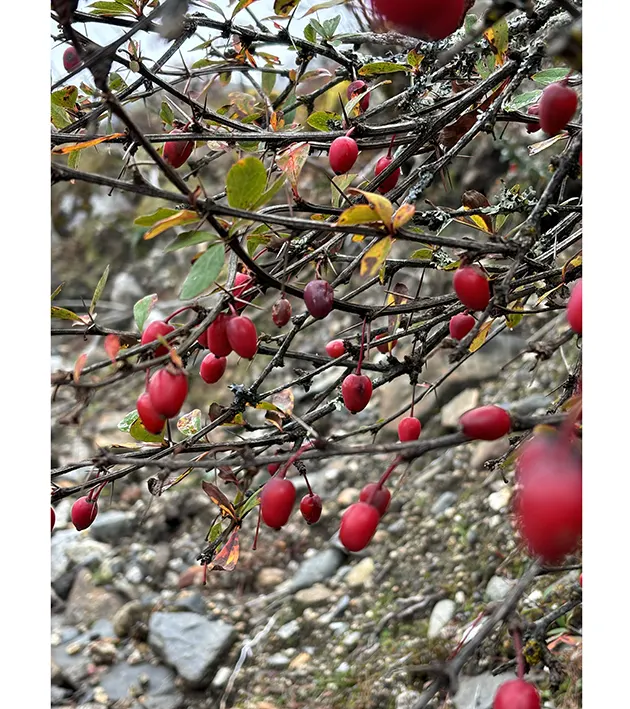ITANAGAR, 12 Jul: A team of researchers has discovered a new species of Berberis in the high-altitude forests of Tawang.
The discovery was made during an ongoing floristic survey by research scholar Bipankar Hajong and scientist Dr Pankaj Bharali from CSIR-NEIST, Jorhat, and Dr Julian Harber, a scientist from UK.
The species, Berberis myriovula, is distinguished by an unprecedented ovule count up to 17 in a single ovary, making it the highest recorded among the known 400-500 species of the genus worldwide, Dr Bharali said in a press release.
“This biodiversity-rich Eastern Himalaya has emerged as a hotspot for Berberisspecies, many of which remain unrecognised by science,” the release stated.
“Previously, most Berberis species recorded in Asia bore fewer than 15 ovules per ovary. A limited number, including B calliantha and B tsangpoensis, have been known to reach this number, primarily among single-flowered or few-flowered fascicled species from Tibet and Nepal. The new species, B myriovula, surpasses them with up to 17 ovules in its solitary flower, making it unique within the genus”, the release said.
“According to Harber (2020), ovaries with high ovule counts are rare and generally found only in a handful of Asian species,” it said.
“Our findings not only add to this rare group but also push the known boundary of ovule number in Berberis, hinting at a potentially adaptive feature in this Himalayan lineage” reported by the researchers.
The genus Berberis, belonging to the family Berberidaceae, is the largest in the group and predominantly found in Asia, with about 285 species in China and 22 in Nepal.
“Despite such diversity, areas like western Bhutan and Arunachal Pradesh remain poorly explored,” the release said.
The research team had earlier reclassified Berberis setifolia, a species from the same region with up to 13 ovules. Globally, Berberis species with large ovule numbers are rarely reported outside Asia. Only two species from South America-B comberiand B microphylla-have been documented with more than 10 ovules, further emphasizing the distinctiveness ofB myriovula, it said.
“This discovery not only enriches our understanding of Himalayan plant diversity but also underscores the ecological significance of the Tawang region as a center of endemism. With continued research, we may yet uncover more botanical treasures from these unexplored valleys” the release said.
The findings highlight the importance of systematic fieldwork in underexplored habitats, especially in regions facing ecological pressures from climate change and development, the release added.
The researchers thanked the Government of Arunachal Pradesh for the all-necessary permissions and logistic support during the extensive field expedition, which they said will be continuing in the future towards more discoveries to science from the hidden treasures of the state.



